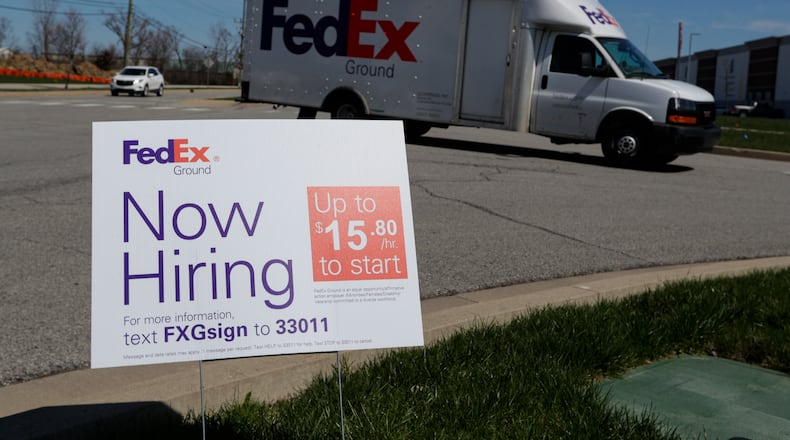In Montgomery County, 11,178 people filed for jobless benefits last week, down from 12,847 people in the previous week.
In Butler County, 6,768 people sought benefits, down from 7,537 in the week previous. In Clark County, 2,387 people sought benefits, again down from the previous week’s 3,409. Warren County saw 4,085 claims, up from 4,034 the week before last week.
Essentially, an estimated 17 million Americans find themselves mired in pandemic-related unemployment, leading to an estimated unemployment rate of well above 10 percent.
Some economists expect 20 million jobs to be lost in April.
These numbers were all but "unthinkable" several weeks ago, said Gus Faucher, PNC Bank chief economist.
“That scale of job losses is unprecedented in U.S. history,” Faucher said in a note Thursday. “After huge job losses of 701,000 in the March jobs report, the April report from the Bureau of Labor Statistics (to be released Friday, May 8), will show job losses in the millions.”
Some of the job losses might not be permanent if the stimulus bill encourages businesses to hold onto their workers, he said.
The advance seasonally adjusted insured unemployment rate was 5.1 percent for the week ending March 28, an increase of three percentage points from the previous week’s unrevised rate, the government said.
The COVID-19 pandemic, with attendant government orders to shut down nonessential businesses across the nation, has been pushing unemployment to record highs. The previous high was 6.635 million claims in May 2009.
Jobless claim filings are a good indicator of layoffs, letting workers who have lost their jobs secure temporary financial assistance.
For the week ending April 4, the Ohio Department of Job and Family Services reported 226,007 initial jobless claims to the Labor Department, the second week that more than 200,000 new claims were filed by Ohioans. The number of initial jobless claims filed in Ohio over the last three weeks stands at 696,519.
“To put that in perspective, 364,603 initial jobless claims were filed during the entire year in 2019,” the state said in a news release Thursday.
Ben Ayers, Nationwide senior economist, cautioned that the attempt to restart the economy might be uneven for many locales.
“While some of these workers should regain their jobs once the economy restarts, many will not for some time as the economic effects of COVID-19 linger,” Ayers said Thursday.
“The mounting impact on workers and consumers from the economic shutdown will be a substantial drag on economic activity in the near-term,” Ayers said. “We expect that real GDP (gross domestic product) growth will decrease at record pace during the second quarter with growth for all of 2020 being one the weakest years in U.S. history.”
After a drop of 700,000 jobs during March, it is likely that the contraction in non-farm payrolls during April — and maybe May as well — will be measured in the millions, he added.
The nation is seeing unemployment benefit application systems crash due to unprecedented demand. Some workers are being furloughed, asked to take a pay cut, or are taking mandatory paid time off, said a note from Anderson Economic Group, an East Lansing, Mich.-based market analysis firm.
“The 6.6 million unemployment claims number for last week is staggering,” said Brian Peterson of Anderson Economic Group. “While the unemployment claims numbers provide some insight into the current state of the economy, the impact of COVID-19 extends well beyond just those who were able to file for unemployment.”
About the Author


